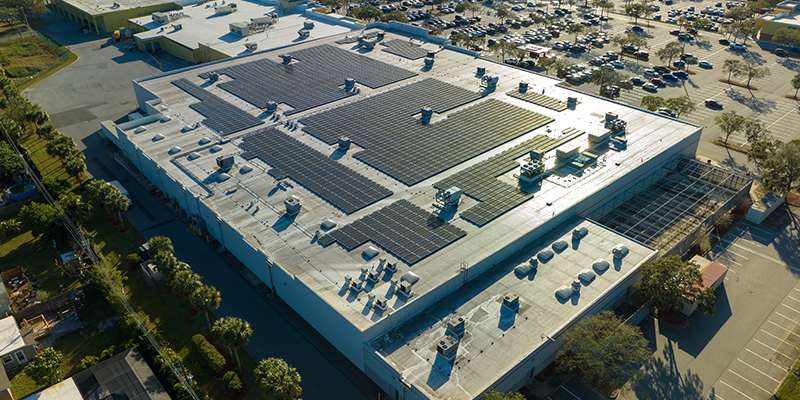By Brielle Scott
Skyrocketing demand from data centers and advanced manufacturing is outpacing the grid’s capacity and reshaping where and how projects get built. In the closing session at I.CON Central in Columbus, Ohio, Matthew O’Hare, managing director – data structures group, Power Construction, led a discussion on how to navigate this high-stakes shift and position projects for success in a constrained-energy future.
O’Hare was joined by Joe Davis, senior vice president, JLL; Matt Garver, director, development services, Prologis; and Mike Settineri, partner, Vorys, Sater, Seymour and Pease LLP.
O’Hare started by sharing a statistic from a recent report by Deloitte: By 2035, Deloitte estimates that power demand from AI data centers in the United States could grow more than thirtyfold, reaching 123 gigawatts, up from 4 gigawatts in 2024.
That’s a look 10 years ahead; what was it like 10 years ago? “From 2015 really through 2020, power was not a discussion that many of us brokers and developers and site selectors were having,” said Davis. Typically, the utility providers were able to provide 25, 50 or 100 megawatts with relative ease. That started to change as data centers began to proliferate.
“What we’ve seen within the last 24 to 36 months has been a big pullback from the electric utilities and their capability to deliver power at the scale that’s being asked,” Davis said. “Even [power loads] as small as 25 megawatts has become more and more challenging to deliver.”
“There seems to be a lot more automation that’s happening within industrial facilities,” said O’Hare. “Have you seen an increase in load requirements versus where we were 10 years ago?”
It’s dependent on the client, Garver said, and a good thing to clarify up front instead of making assumptions. “Before, you might have assumed a certain load or slab thickness. Now it’s a little more custom. Even throughout the building you’ll have various areas that have different load requirements.”
“Are tenants or prospective tenants getting more savvy in their requirements, or are they still relying on the solicitation team to help them out with that?” O’Hare asked the group.
“I absolutely think tenants are becoming more savvy as part of the proposal process,” said Davis. Tenants are asking about switchgear, the ability to upgrade transformers, and so on.
“If you can’t answer those questions as a developer, you may not make the second tour list.”
“If a developer has advanced a load study with the electric utility and maybe has natural gas or behind-the-meter generation as a stopgap until it gets to that grid connectivity, that would make for a good data center site,” for the data center end users he works with.
If you want to bring a data center project online quickly, you’re going to look at behind-the-meter power generation. “In Ohio, we had a great bill that passed – I think it’s very much on the cutting edge – where the four of us could put a power plant down and run lines to different customers and feed them, and it still would be behind-the-meter power,” Settineri said.
This approach doesn’t violate the utilities’ monopoly service, and those projects are being supported quite well through the permitting process, he added.
Power utilities are becoming pickier about who they work with and what is required to even initiate those conversations, the panelists agreed. “A lot of times the first step is to justify the ask; you need to come up with a number,” Garver said. “They’re overwhelmed with the amount of people reaching out and trying to prioritize their time.”
Utilities might require a site plan, or even the end user, to gauge the feasibility of your project. In some cases, there must be proof of site ownership, or a deposit of $250,000 or more, just for a load study.
What about nuclear power?
“JLL’s view on this is that in the 2030s and beyond, [nuclear power] is going to be a huge player,” said Davis. The company represents several players actively seeking sites to build small modular reactors, but it’s been difficult to find sites that allow for that from a zoning perspective.
“Nuclear is going to play a huge role in the grid over time, but I think natural gas is a really good stopgap until nuclear can get permitted and built, just from a timing perspective,” he added.
Tertiary markets with strong labor might be surprising winners in the next phase of data center development, Davis said. He pointed to small towns in Western Pennsylvania that used to be steel manufacturing towns. The steel operators have shut down and they’ve lost thousands of jobs, but there are stranded power assets there.
Michigan is changing laws to try to bring more data centers; they’re bringing more power online, turning reactors back on.
“Those markets are going to do really well,” Davis said. “And they want them – they want data centers there. They’ve got the labor story, and they’ve got the power. And I think they’re going to be huge beneficiaries in the data center race to come.”

This post is brought to you by JLL, the social media and conference blog sponsor of NAIOP’s I.CON Central 2025. Learn more about JLL at www.us.jll.com or www.jll.ca.








